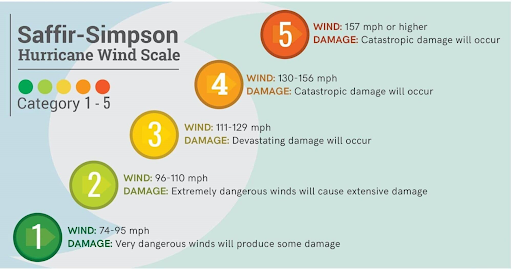Important Facts For Prelims
Hurricane Ida
- 30 Aug 2021
- 3 min read
Why in News
Recently, Hurricane Ida made landfall in Louisiana, US. It is an extremely dangerous Category 4 storm and one of the most powerful storms ever to hit the US.
- It will test the hundreds of miles of new levees that were built after the devastation of Hurricane Katrina (2005), which made landfall 16 years ago in the US.
Key Points
- About: Hurricanes are the biggest and most violent storms on the planet.
- Tropical cyclones or hurricanes use warm, moist air as fuel, and therefore form over warm Equatorial water.
- Mechanism:
- When the warm, moist air rises upward from the surface of the ocean, it creates an area of low air pressure below.
- When this happens, the air from the surrounding areas rushes to fill this place, eventually rising when it becomes warm and moist too.
- An eye forms in the centre. It is the calmest part of the cyclone. Before the wind reaches the centre it gets warmed up and rises upwards.
- When the warm air rises and cools off, the moisture forms clouds. This system of clouds and winds continues to grow and spin.
- This disturbance is fuelled by the ocean’s heat and the water that evaporates from its surface.
- Such storm systems rotate faster and faster.
- Storms that form towards the north of the equator rotate counterclockwise, while those that form to the south spin clockwise because of the rotation of the Earth.
- Names in Different Regions of the World:
- Typhoons: Tropical cyclones are known as Typhoons in the China Sea and Pacific Ocean.
- Hurricanes: In the West Indian islands in the Caribbean Sea and Atlantic Ocean.
- Willy-willies: In north-western Australia and
- Tropical Cyclones: In the Indian Ocean Region.
- Categorization of Hurricanes:
- Hurricanes are categorized on the Saffir-Simpson Hurricane Wind Scale, which rates them on a scale of 1 to 5 based on wind speed.
- Hurricanes that reach category three or higher are classified as major hurricanes.





